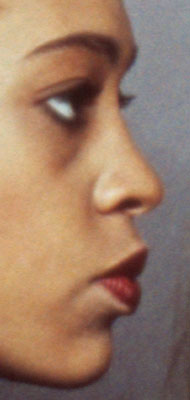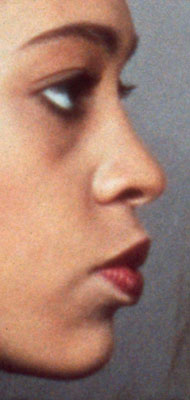|
Kodak Ektar 100 color negative film test (updated d.d.
15-01-2009)
Index
Introduction
Now with the release of a new film type becoming an
extreme rarity in this digital age, Kodak surprised us all with
the release of the new Ektar 100 color negative film. Supposedly
"the world's finest grain film", this claim of Kodak still
had to be tested properly in a genuine test and comparison to other
film types. Since I managed to pick-up a roll of test film at the
PhotoKina, and stumbled on another booth giving away test charts,
I decided to be one of the first to put this film through a thorough
test.
"Film is dead..." is what one often hears
when still carrying around a nice analog camera. Yet, I still enjoy
shooting film, and thriving internet communities like APUG
(Analog Photography Users Group) prove that I am not the only one,
and that film is still here to stay for quite a while.
Much of the claims of digital "being better"
than analog, are based on unfamiliarity with film and the ways to
use it, whether during capture, analog processing and printing in
the darkroom, or digitization via scanning. Actually, I think the
whole discussion of film-versus-digital is irrelevant in the first
place, both are just means to capture an important image / event
or scene, and what means is used to accomplish this, should in fact
play no role at all in the evaluation of the usefulness, or value,
of the final result - a photo.
However, many people in the digital camp of this unnecessary
flame war, have never actually seen a properly scanned image. Most
claims of film "being dead" are based on poorly scanned
images on non-calibrated consumer grade scanners, resulting in blown
out highlights, blocked shadows, low resolution and poorly focused,
and thus unsharp, scans. Most of the consumer grade flatbed scanners,
even the much acclaimed Epson V700/750, rarely manage to reach true
2400 ppi optical resolution. Only dedicated, but rather expensive,
film scanners like Nikon Coolscan or Minolta, and the even higher
ranked but extremely expensive Hasselblad Imacon and various brands
of drum scanners, are capable of true optical scanning resolution
of 2400ppi and higher (up to some 8000ppi). Not that most films
will actually contain so much information, see my Optimal
scanning resolution webpage for more info.
Yet, 100 ISO film, I think, is on par with any of the
latest digital reflex bodies in the 12-16 Mpixel range, at least
in terms of resolution. And certainly Kodak's claim of "World's
finest grain" seems promising enough. So how do we test the
new Kodak Ektar 100 film, and how it compares to other already established
fine grain film types and a pixel monster like the Sony Alpha 900,
in a good manner? Well, here's the story:
> Next:
Test setup
*********************
UPDATE NOTICE
I intially conducted this test using an Imacon Flextight
646 scanner with a maximum 6300 ppi (Pixels-Per-Inch) resolution.
However, this was only a "second-best" option, since I
had actually hoped to be able to scan on an Imacon Flextight 848
that I had good experiences with before, and could hire at the professional
lab that normally does my film processing. However, when I most
needed it, this scanner turned out to be on a major servicing overhaul.
Despite many broken promises ("It will be back next week..."),
it didn't return for several months. I therefore resorted to the
"backup" 646, that turned out to be in deplorable state.
Badly calibrated and with a monitor in dire need of replacement,
that scanner still beat my own Canon 9950F hands down, but it wasn't
what I initially intended to do...
THE GOOD NEWS:
The overhauled 848 was finally back! And the difference
is significant, although, to be honest, at 6300 ppi, even the
646 was already stretching 100 ISO film to it's limits, so at
the superior 8000 ppi resolution, we are not only getting more
resolution, but also a bit more visibility of "grain".
The "backup" 646 now turns out to have a minor focussing
issue as well, as the overhauled 848 turns out sharper results,
even disregarding it's superior 8000 ppi maximum optical resolution.
I hereby include two crops of scans to show you the difference,
both are unsharpened! Be aware though, that in the real world
this minor focusing issue is pretty much irrelevant, simply because
even the 646 at 6300 ppi was stretching ISO 100 film capabilities,
meaning that the superior 8000 ppi and better focusing, hardly
extract new detail, but mostly more visibility of grain and (electronic)
noise. Sharpening up the 646's results a bit further than the
848's results, therefor results in images almost equal in detail.
|
Imacon Flextight 646
6300 ppi scan downscaled to 4800 ppi, bicubic
interpolation
Minor focussing and calibration issues
|
Imacon Flextight 848, overhauled and serviced
8000 ppi scan downscaled to 4800 ppi, bicubic
interpolation
|
 |
 |
I have now updated all images on the site to reflect
the 848's result. Enjoy revisiting the test!
*********************
|